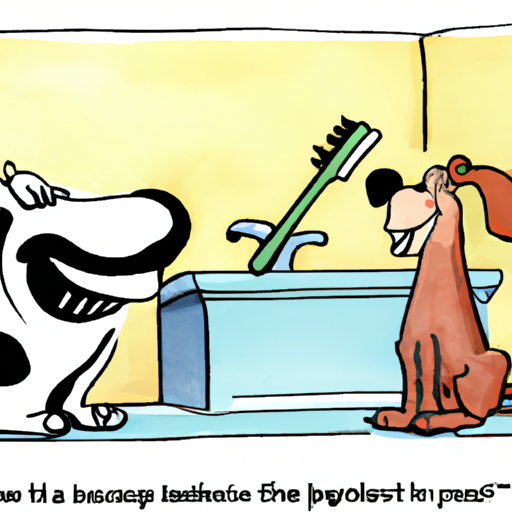Why Brushing Your Dog’s Teeth is Important
You might think that brushing your dog’s teeth is an unnecessary chore. After all, your dog seems to be doing just fine without any dental hygiene, right? Well, as a caregiver, your responsibilities stretch beyond providing food and shelter for your furry friend. Your dog’s dental health can significantly impact their overall health and wellbeing. Ignoring it can lead to serious issues such as gum disease, tooth loss, and even heart disease.
What to Use to Brush Your Dog’s Teeth
So, you’ve decided to take your dog’s dental health into your hands – fantastic! But what exactly should you be using to brush their teeth? Here’s a quick rundown:
- Dog Toothpaste: Human toothpaste can be toxic to dogs. Always use a toothpaste specially designed for dogs.
- Dog Toothbrush: These are designed to fit comfortably in your dog’s mouth. Some options even fit over your fingertip for easier brushing.
- Dental Chews: These aren’t a replacement for brushing, but they can certainly help keep your dog’s teeth clean between brushes.
| Type | Description | Frequency of Use |
|---|---|---|
| Dog Toothpaste | Specially formulated for dogs, safe if swallowed | Daily |
| Dog Toothbrush | Designed to fit in dog’s mouth, various sizes available | Daily |
| Dental Chews | Supplementary tool, good for between brushing | As needed |
How to Brush Your Dog’s Teeth
Brushing your dog’s teeth might seem daunting, but it’s actually quite simple once you get the hang of it. Here’s a step-by-step guide:
- Introduce the Toothpaste: Allow your dog to taste the toothpaste before you start. This helps them get used to the flavor.
- Brush Gently: Using a soft-bristled dog toothbrush, gently brush your dog’s teeth in a circular motion. Focus on the gum line, where bacteria likes to hide.
- Be Patient and Consistent: Your dog might not be comfortable with teeth brushing initially. Be patient and make it a consistent routine for them to get used to it.
Common Mistakes to Avoid
As you embark on this journey of canine dental hygiene, here are a few pitfalls to avoid:
- Never Use Human Toothpaste: It contains ingredients like fluoride that can be harmful to your dog.
- Don’t Rush the Process: If your dog is uncomfortable, take a break and try again later. Forcing it can make them dread tooth brushing.
- Don’t Ignore Signs of Dental Disease: Bad breath, difficulty eating, and red gums are all signs of dental disease. If you notice these, consult a vet immediately.
FAQ
Q: How often should I brush my dog’s teeth?
A: Ideally, you should brush your dog’s teeth daily. But if that’s not possible, aim for at least three times a week.
Q: My dog hates having their teeth brushed. What should I do?
A: Be patient and try again later. You can also try using flavored toothpaste or rewarding them with a treat after each session.
Q: Can I use my toothbrush to brush my dog’s teeth?
A: It’s best to use a toothbrush designed for dogs. They’re shaped to fit in your dog’s mouth and are softer than human toothbrushes.
Remember, as a caregiver, your dog relies on you for their health and happiness. Taking care of their dental hygiene is just one more way you can show them your love.



